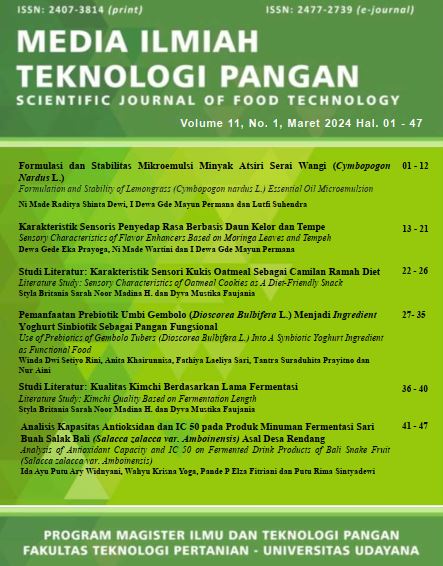Karakteristik Sensoris Penyedap Rasa Berbasis Daun Kelor dan Tempe
Abstract
Moringa leaves and tempeh contains high levels of glutamic acid, which has the potential to be developed as a flavor enhancer substitute for monosodium glutamate (MSG). This study aims to determine the sensory characteristics and the effect of the percentage of additions (1%, 2%, 3%, 4%, and 5%) of moringa and tempeh-based flavor enhancers on processed foods in the form of spinach clear soup. The design used in this study was a completely randomized design. The variables observed included the testing of sensory properties in the form of a threshold stimulation test, duo trio test, scoring test on taste parameters, and hedonic test on color, aroma, taste, and overall acceptance parameters. Data were analyzed by Analysis of Variance (ANOVA) and followed by Duncan's test. The results showed that flavor enhancers based on moringa leaves and tempeh had an absolute threshold of 0.17% and a difference threshold of 0.25%, and had a different level of umami flavor compared to MSG. The percentage of the addition of flavor enhancers has a very significant effect on the scoring of taste and the hedonics of color, taste, and overall acceptance, and has no significant effect on the aroma hedonics. The addition of flavor enhancer based on moringa leaves and tempeh with a percentage addition of 5% produces spinach clear soup with good sensory characteristics having a taste scoring value of 4.47 (very tasty), and color hedonics of 3.57 ( mildly like), aroma of 4.33 (mildly like), taste of 4.63 (like), and overall acceptance of 4.60 (like).








